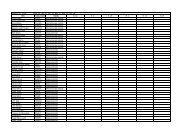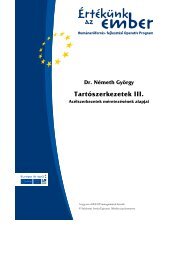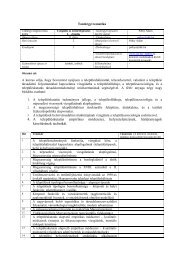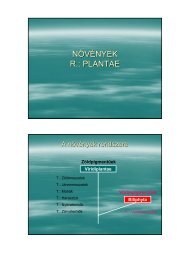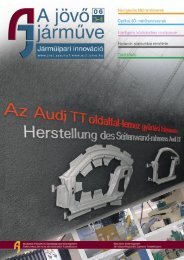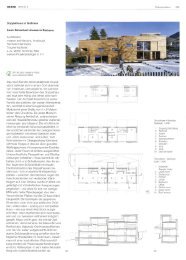Environmental Kuznets curves—real progress or passing the buck ...
Environmental Kuznets curves—real progress or passing the buck ...
Environmental Kuznets curves—real progress or passing the buck ...
You also want an ePaper? Increase the reach of your titles
YUMPU automatically turns print PDFs into web optimized ePapers that Google loves.
188<br />
D.S. Rothman / Ecological Economics 25 (1998) 177–194<br />
Fig. 5. Net pollution exp<strong>or</strong>ts—sulfur dioxide 1987 (Antweiler, 1996).<br />
versus income levels, and nei<strong>the</strong>r study finds supp<strong>or</strong>t<br />
f<strong>or</strong> <strong>the</strong> EKC hypo<strong>the</strong>sis. de Bruyn and Opscho<strong>or</strong><br />
(1997) briefly discuss trade and imp<strong>or</strong>t<br />
substitution, but do not inc<strong>or</strong>p<strong>or</strong>ate it into <strong>the</strong>ir<br />
analysis.<br />
5. Better measures of environmental impact<br />
If one accepts <strong>the</strong> arguments to this point, <strong>the</strong><br />
question <strong>the</strong>n arises—what are appropriate, <strong>or</strong> at<br />
least better, measures of environmental impact?<br />
Ekins (1997) examines an aggregate indicat<strong>or</strong> developed<br />
by <strong>the</strong> OECD which includes: (1) CO 2 ,<br />
SO 2 ,NO x emissions per capita; (2) water abstraction<br />
per capita; (3) percentage of population with<br />
sewage treatment; (4) protected areas as a percentage<br />
of total area; (5) imp<strong>or</strong>ts of tropical timber<br />
and c<strong>or</strong>k; (6) threatened species of mammals<br />
and birds as a percentage of all such species in <strong>the</strong><br />
country; (7) generation of municipal solid waste<br />
per capita; (8) energy intensity (primary energy<br />
per unit of GDP); (9) private road transp<strong>or</strong>t<br />
(passenger kilometers in private vehicles per capita);<br />
and (10) nitrate fertilizer application per km 2<br />
of arable land and permanent cropland. As might<br />
be expected, examining <strong>the</strong> relationship between<br />
this indicat<strong>or</strong> and income levels, Ekins finds no<br />
supp<strong>or</strong>t f<strong>or</strong> <strong>the</strong> EKC hypo<strong>the</strong>sis.<br />
Is it possible to go fur<strong>the</strong>r to m<strong>or</strong>e explicitly<br />
and completely link a measure of environmental<br />
impact to consumption? The study has presented<br />
various data on consumption and <strong>the</strong> net trade.<br />
These data lend no supp<strong>or</strong>t to <strong>the</strong> EKC hypo<strong>the</strong>sis<br />
when examined as a function of income level.<br />
They make no adjustment, however, f<strong>or</strong> differences<br />
in <strong>the</strong> ways in which <strong>the</strong>se goods and services<br />
are produced, transp<strong>or</strong>ted, used and<br />
ultimately disposed of in different countries and<br />
over time. With an increasingly globalized economy,<br />
it could be argued that <strong>the</strong> inter-country<br />
differences are small enough as to be insignificant.<br />
Even if this were to be accepted, though, <strong>the</strong>re<br />
would still be <strong>the</strong> question of how <strong>the</strong> environmental<br />
impacts have changed over time and how<br />
<strong>the</strong>y differ across goods, services and resources, so





